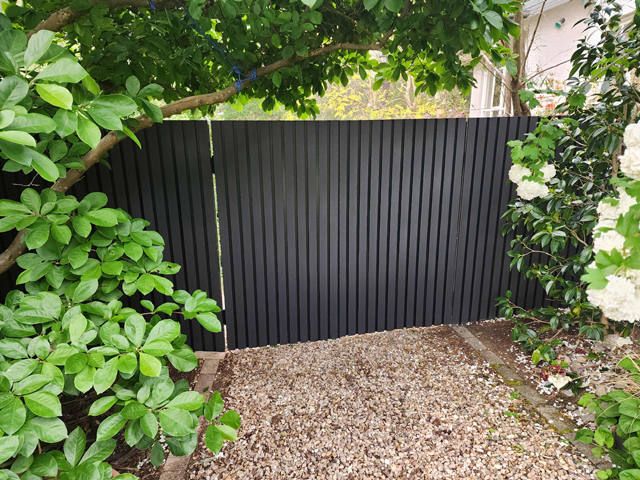HOW TO HEAT PROOF YOUR GARDEN
29 Oct 2012
With a hot summer ahead, how can you prepare and look after your garden so it survives high heat loads?

Winter of 2012 was one of the driest on record and this trend is expected to continue throughout the forthcoming summer. The Bureau of Meteorology (BOM) rated chances of below normal rainfall levels at 60-75%, and the outlook for temperatures across Australia are likely to exceed the median maximum temperature by at least 60% in most Australian states, and over 75% in our tropical regions. With such a strong prediction for a very hot summer ahead, the importance of using drought tolerant plants and turf, and looking after them, has never been greater. Ozbreed have been breeding and trailing many successful drought tolerant plants and turf for years, and have found proven success with a number of cultivars such as Lomandras, Dianellas, Westringias and Callistemons. All of these breeds are super forgiving when charged with high heat loads.


When establishing greenlife in your garden, you can give it a helping hand. Choosing drought tolerant plants and turf, good soil preparation with the right PH level, and using organics mixed into the soil will help the plants survive the drought and hot summers. In most populated areas of Australia, many drought tolerant plants and turf can survive on natural rainfall alone.
Lawns such as Empire Turf, some Couch varieties, and even some Buffalo types such as Palmetto Soft Leaf will survive on natural rainfall through drought and extreme heat load periods. Native Dianellas like Little Rev, Little Jess, Tasred, and Cassa Blue, and Lomandras such as Tanika and Nyalla are so tough, that in the eastern states they thrive on no irrigation at all. If you are planting exotics or rather more water hungry plants, keep them to one small area of the garden so as to not waste a lot of water.
Once you have installed your waterwise garden, or even for well established gardens, there are many common sense practices that can be employed to make the most out of watering your garden and preventing soil dry out. Wetting agents are also recommended to be applied during spring, to both lawns and gardens. And as always, avoid watering in the heat of the day so as to maximize the water getting into the ground. Mulch is a great water saving device, but only with a chunky coarse grade mulch, with no or very small amounts of fine particles, to help retain the water. This will let water flow easily into the garden and help significantly limit evaporation of water from the soil. Shade around a garden can also save water and reduce evaporation, either by means of trees or vegetation. Reducing gravel or concrete areas will also keep garden areas cooler and reduce soil dry out.
Avoid pruning in summer months, as pruning stimulates new growth and therefore also increases water requirements. Avoid fertilising in summer as too much nitrogen can be quite harmful to your garden. Recent research has shown that the optimum time to fertilise is in autumn with a slow release fertiliser and/or in early spring with a quick release fertiliser. Also avoid chemicals and treatments in summer.
Always try to mow lawns a little longer in the warmer months as this can have a huge impact on the quality of the lawn. It is best to water your lawn infrequently, but heavily, as this allows the roots to grow much deeper than frequently watered lawns. Aerating your lawn to allow water to penetrate further is also a good idea, particularly if you have compaction problems - a compact lawn will suffer badly in extreme summer conditions. Keep an eye out for summer bugs such as army worm, web worm and African black beetle. These pests can weaken and devastate a lawn, greatly reducing its ability to survive drought.
It is very important that throughout the remainder of this spring and early summer that you utilise this time to well water your garden, so that it is in optimum position to handle the expected high heat loads yet to come. Simply follow some of the above mentioned practices, and come autumn 2013 your garden should still be thriving, healthy and beautiful.
For more information on drought tolerant plants and turf: http://www.ozbreed.com.au/
Recently completed research on 'Measuring Drought tolerance in Plants' helps landscape architects and designers choose drought tolerant plants based on real world data and accurate measurements. For more information on this research, please follow link and download PDF: http://www.ozbreed.com.au/plant-turf-research.html

MORE NEWS

COCKADOODLE DOO

LANDSCAPE QUEENSLAND ANNOUNCES 2025 WINNERS

GREENPLATE DELIVERS PREMIUM BBQ UPGRADE FOR THE SINCLAIR BY MOSAIC

MAJOR DEVELOPMENT ANNOUNCEMENTS FOR BLACKWATTLE BAY

FUTUREWOOD COMPOSITE TIMBER, ALUMINIUM DECK SUBFRAME, CASTELLATED CLADDING AND ALUMINIUM FENCE FRAMING

